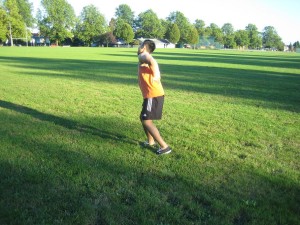Hip pointer is a sports injury that can occur if the individual receives a direct blow or falls on his/her side and the initial part that absorbs the impact is the external part of the hip bone. A hip pointer is basically a profound contusion or bruise on the upper part of the pelvis that can be felt on either side of the waistline. It is characterized simply by the presence of hip pain.
It is a painful injury that can keep an individual away from any activity if he/she resumes activity before it has properly healed. Take note that it is not difficult to handle since the strong muscles that attach place constant stress on the area.
How a hip pointer occurs
A hip pointer is caused by a direct blow to the top part of the pelvis which is called the iliac crest. It can occur due to a direct blow during contact sports or when the individual falls and hits a hard surface.
Who are at risk?
Individuals who engage in contact sports especially those who do not use appropriate protective gear and padding are at highest risk. Football players face the highest risk since they often get hit by the helmet or shoulder pads of opponents, hit the ground hard or both. Other sports that put individuals at risk for pectoral muscle strain include rugby, hockey, and soccer, lacrosse, cycling and skiing.
Symptoms of pectoral muscle strain

- Abrupt pain on the upper, exterior part of the iliac crest caused by a fall or direct blow
- A limp
- Hip pain that worsens with activities such as jumping, running, bending or twisting
- Limited range of motion at the hip joint
- Tenderness in the upper part of the hip
- Possible bruising and muscle spasms in the hip area
Treatment for a pectoral muscle strain
When treating a pectoral muscle strain, you can learn the appropriate measures by enrolling in a first aid course. Initially, the individual must be given enough time to rest for 24-48 hours in order to prevent further damage. Always bear in mind that a hip pointer injury must be given time to heal on its own.
Do not forget to apply ice packs for 15-20 minutes for 3-4 times in a day for the initial 24-72 hours. Avoid applying ice directly on the skin. Make sure that you will apply a clean towel or cloth before applying the ice pack.
Recovery period
Always remember that a hip pointer requires time to heal. It is vital to move the hip so that it will not become stiff or lose its range of motion, but also allow the healing process to work. Take note that movement must be free from pain.
The pain from a hip pointer can last for several weeks and can be triggered when it comes in contact with things or somebody. Take note that the recovery period of each individual tends to vary, thus resuming activity is determined by how soon the hip recovers.
